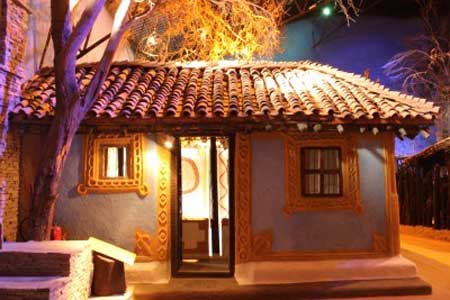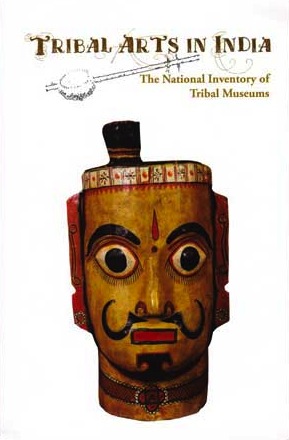
As per the last news reports, India’s first live Tribal Museum has registered a marked increase in tourist footfall this year. And if data is to be analysed, the footfall of domestic and international tourists has considerably increased since it has been inaugurated on a year-on-year basis. | Read the full report on Times Travel >>
[…] the curator of the museum said that the museum’s liveliness was one of the major reasons for attracting visitors. […]
This place is an ode to the tribal art and culture of the region. The folklores, lifestyle, rituals and social customs of all seven indigenous tribes of MP―the Gonds, Bhils, Bharias, Sahariya, Korku, Kol, and Baiga are showcased in the museum through a repository of traditional art. […]
As you step in to these galleries, the exhibits are displayed in such a manner that you feel you are entering right into the heart of their homes and lives.
How to reach MP’s Tribal Museum?
The nearest bus stop is Depot Chouraha near Shastri Nagar. The Tribal Museum is around 800 m from the bus depot.
Source: All that you need to know about India’s first ever Tribal Museum, Times Travel, 9 August 2018
URL: https://timesofindia.indiatimes.com/travel/things-to-do/all-that-you-need-to-know-about-indias-first-ever-tribal-museum/as65339347.cms
Date visited: 10 October 2018
This extremely well-done museum is dedicated to the tribal people who make up over 10 million of the population of the central Indian state of Madhya Pradesh. Opened in 2013, this is not a storehouse of dead objects. Created with the labours of a thousand tribal artistes arriving in batches, from every part of the state, recasting myth and life in amazing visuals, out of traditional materials like wood, iron, jute, mud, clay, straw, hemp and leaves, as well as canvas, acrylic and glass.
Source: 10 Museums Of Bhopal
URL: http://www.bhopale.com/place/10-museums-of-bhopal
Date visited: 10 October 2018

Read or download titles for free (eBooks & Magazine) >>
The Tribal museum in Bhopal is very thoughtfully planned and the entire campus is theme based right from its entrance. Every art work has some meaning to it which is beautifully depicted but difficult to deipher without basic knowledge of the tribes. Best way to understand is ask for a copy of their colorfull brochure which describes meaning of all the major artifact in Hindi. […]
The well planned campus is divided into 6 galleries depicting Cultural Diversity, Tribal Life, Tribal Art, Tribal Mythology, Tribals of Chattisgarh and Tribal Games. It also has Art Exibition Gallery and Open Air Theatre. All the artfacts in Galleries are majorly taken from 7 major and most important tribes of state namely Gond, Bheel, Korku, Kol, Bharia, Baiga and Saharia.
Address Madhya Pradesh Tribal Museum Shyamala Hills, Bhopal 462002, Madhya Pradesh, INDIA Phone: +91 755 2661948, 2661640
Email: mptribalmuseum@gmail.com
Website: https://mptribalmuseum.com
Source: Tribal Museum Bhopal by Rajnish Khare
URL: https://bhopal.info/explore/museums/tribal-museum/
Date visited: 25 December 2018
The Madhya Pradesh government aims to take the tribal painting market beyond Rs 100 crore per year. The current market for MP’s tribal paintings is of Rs 10 crore. So far, only paintings by the Gond tribe are famous in the country and abroad. However, from now on, paintings and artwork by the Bhil, Baiga and Saheria tribes would also get government support.
MP Handicrafts and Handloom commissioner Rajeev Sharma said, “Besides being sold within the country, Gond paintings of MP are sold in Japan, China, Germany and England. There is a wide scope to market tribal paintings. While Bhils are good painters, people from Baiga tribe get their entire body painted. Saharia and Kol tribes are proficient in wall painting. The government would guide them to paint, keeping in mind the commercial value and will provide all requisite support — from canvas to market exposure. We aim to grow the tribal painting market to Rs 100 crore.” […]
Handicrafts and Handloom Corporation employees visited all 20 tribal districts in the state, including Mandala, Dindori, Balaghat, Shahdol, Jhabua, Alirajpur, Barwani, Dhar, Khargone, Khandwa, Burhanpur, Ratlam, Hoshangabad, Betul, Sidhi, Seoni, Chhindwara and Sheopur and discovered that there are at least 40 different types of art work and products that tribals make, but are not marketed. The idea to sell their paintings also came during the same exercise. […]
At least 13,000 handicraft units are working in the state. The Handloom Development Corporation is collaborating with Andhra Pradesh, Telangana and Chhattisgarh to sell its products in other states. Besides, it is in the process of setting up handicraft villages in national parks of the state, including Kanha, Bandhavgarh and Pench, to target foreign tourists in particular. […]
The total population of MP is 7.26 crore [72,6 million]. Of this, the Scheduled Tribe comprises 1.53 crore people [15,3 million], which is 21 per cent of the total state population. It is the highest tribal population in the country. Officials said the government plans to provide exposure to their talent.
Source: “Madhya Pradesh government to promote artwork of all tribes, eyes Rs 100 crore revenue” by Ankur Sirothia, Times of India, 16 October 2019
URL: https://timesofindia.indiatimes.com/city/bhopal/madhya-pradesh-government-to-promote-artwork-of-all-tribes-eyes-rs-100-crore-revenue/articleshow/71611674.cms
Date Visited: 31 January 2022
[Bold typeface added above for emphasis]

More about the Bhil and Bhilala communities >>
Pithora arts and crafts | Textile >>
Find up-to-date information provided by, for and about Indian authors, researchers, officials, and educators
List of web portals covered by the present Custom search engine
Ashoka Trust for Research in Ecology and the Environment (ATREE) – www.atree.org
Freedom United – www.freedomunited.org
Government of India (all websites ending on “.gov.in”)
Kalpavriksh Environmental Action Group – https://kalpavriksh.org
Shodhganga (a reservoir of Indian theses) – https://shodhganga.inflibnet.ac.in
Survival International – www.survivalinternational.org
UCLA Digital Library – https://digital.library.ucla.edu
Unesco – https://en.unesco.org
Unesco digital library – https://unesdoc.unesco.org
Unicef – www.unicef.org
United Nations – www.un.org/en
Video Volunteers – www.videovolunteers.org
WorldCat (“the world’s largest library catalog, helping you find library materials online”) – https://worldcat.org
To search Indian periodicals, magazines, web portals and other sources safely, click here. To find publishing details for Shodhganga’s PhD search results, click here >>
Search tips
Combine the name of any particular state, language or region with that of any tribal (Adivasi) community.
Add keywords of special interest (music, poetry, dance just as health, sacred grove and biodiversity); learn about the rights of Scheduled Tribes such as the “Forest Rights Act” (FRA); and the United Nations “Declaration on the Rights of Indigenous Peoples”, “Universal Declaration of Human Rights”, “women’s rights”, or “children’s right to education”.
Ask a question that includes “tribal” or “Adivasi”, for instance: “Adivasi way of life better?” (or “tribal way of life worse?”)
Specify any particular issue or news item (biodiversity, bonded labour and human trafficking, climate change, ecology, economic development, ethnobotany, ethnomedicine, global warming, hunter-gatherers in a particular region or state, prevention of rural poverty, water access).
For official figures include “scheduled tribe ST” along with a union state or region: e.g. “Chhattisgarh ST community”, “Himalayan tribe”, “Scheduled tribe Tamil Nadu census”, “ST Kerala census”, “Particularly Vulnerable Tribal Group Jharkhand”, “PVTG Rajasthan”, “Adivasi ST Kerala”, “Adibasi ST West Bengal” etc.
In case the Google Custom Search window is not displayed here try the following: (1) toggle between “Reader” and regular viewing; (2) in your browser’s Security settings select “Enable JavaScript” | More tips >>
Note: hyperlinks and quotes are meant for fact-checking and information purposes only | Disclaimer >>
Some clarifications on caste-related issues by reputed scholars >>
See also
Central region – Central Zonal Council
eBooks, eJournals & reports | eLearning
Languages and linguistic heritage
List of scheduled tribes by the Commissioner of Tribal Development – Madhya Pradesh
Tips for using interactive maps
Toggle to normal view (from reader view) should the interactive map not be displayed by your tablet, smartphone or pc browser
For details and hyperlinks click on the rectangular button (left on the map’s header)
Scroll and click on one of the markers for information of special interest
Explore India’s tribal cultural heritage with the help of another interactive map >>